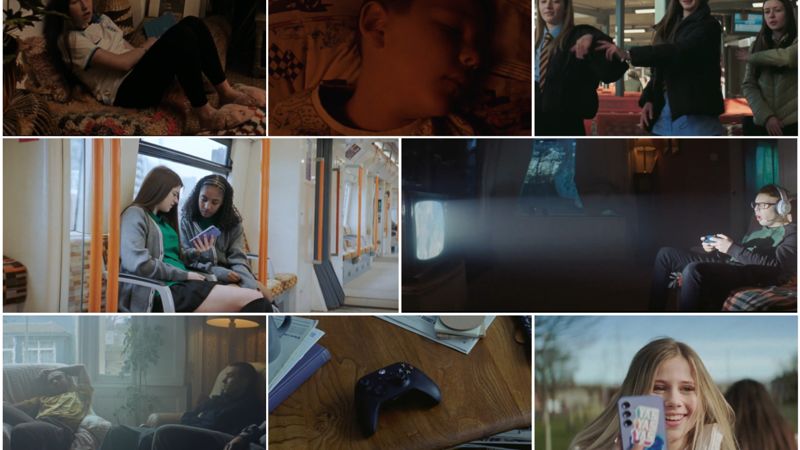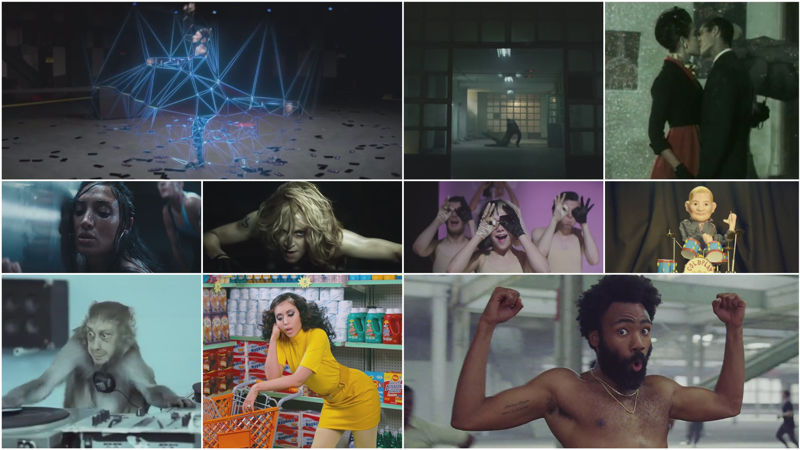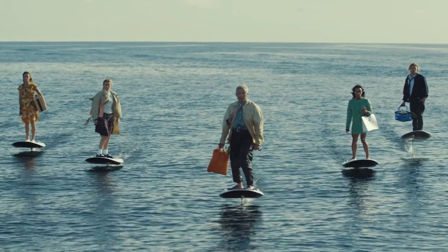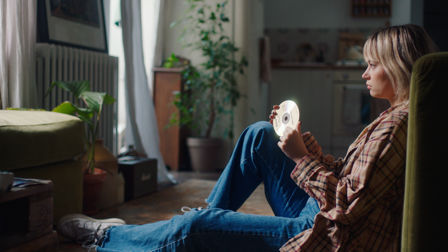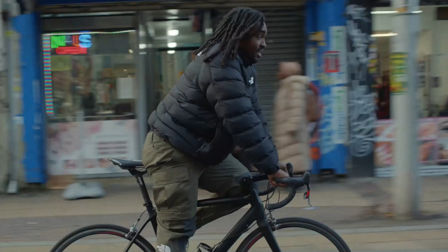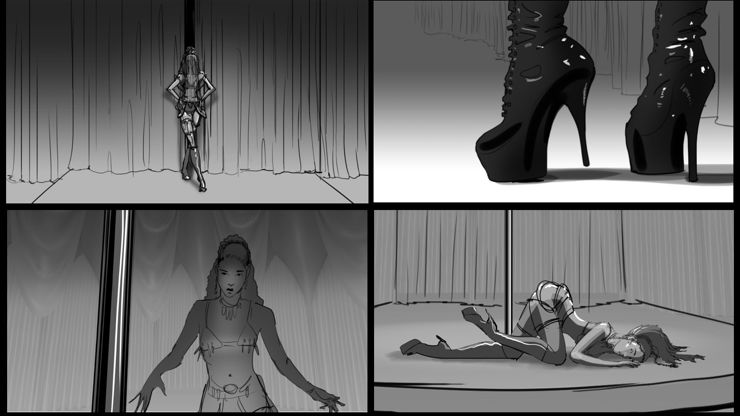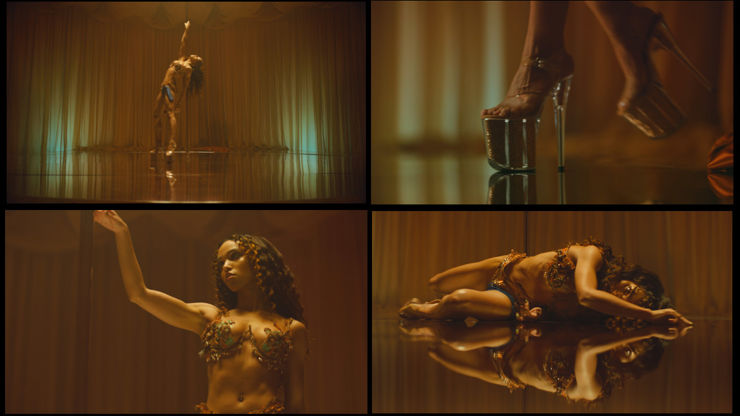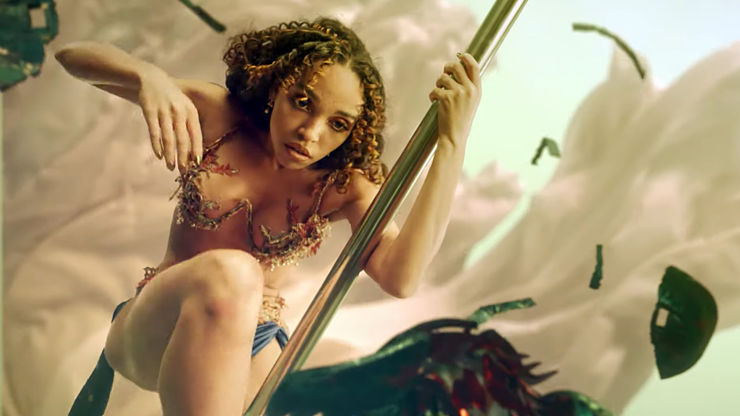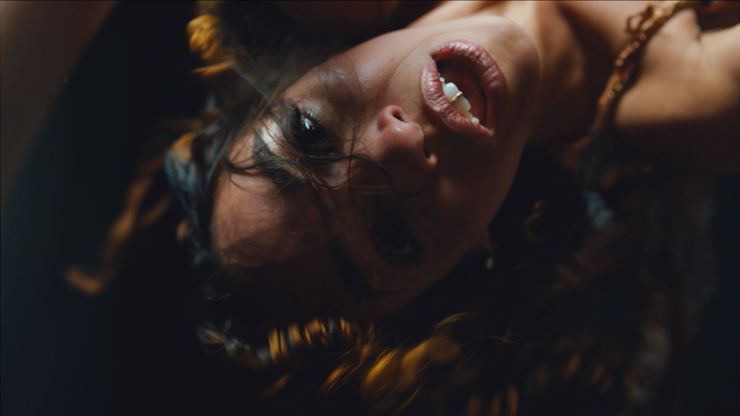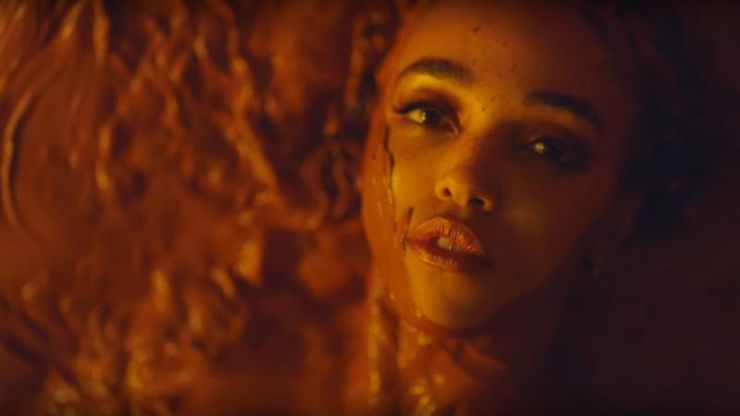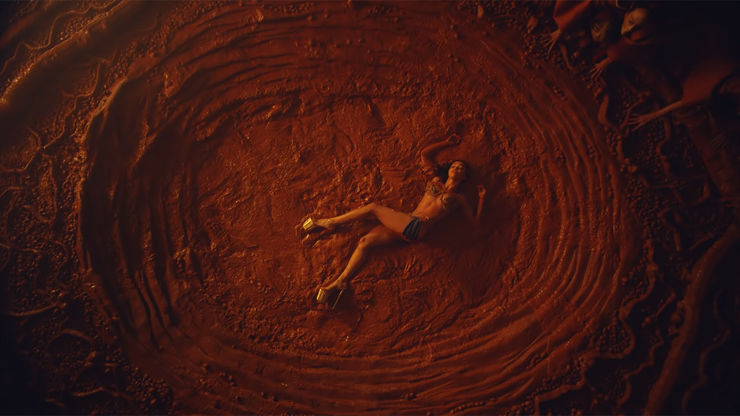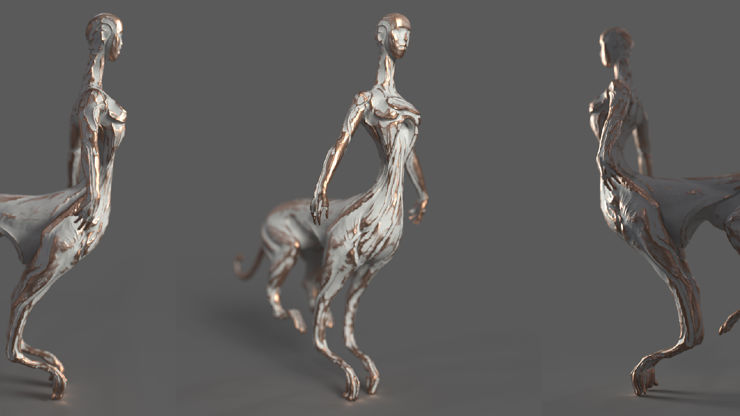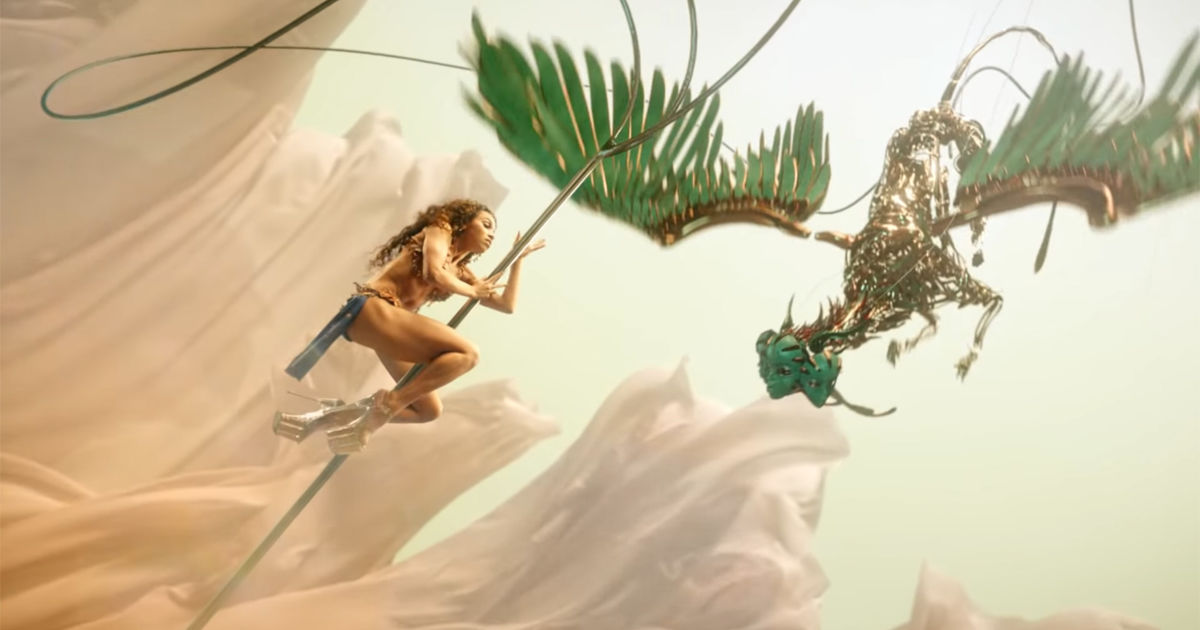Music Video of the Year: FKA twigs, Cellophane
Director Andrew Thomas Huang, who has collaborated with artists like Bjork, Perfume Genius, and Thom Yorke, shares some of the process and influences behind his Icarus-inspired, shots Awards Europe-winning 2019 music video, Cellophane.
Skillfully directing a video that is part personal narrative, part epic poem, Andrew Thomas Huang uncovers a magic place within mirrors and visual effects.
Creating with other creatives can be difficult, but Huang, who has worked closely with strong artistic voices like Bjork and Sigur Ros, has mastered it. You could even say he has it down to an art. Utilizing his partnership with production company Object & Animal as well as taking full advantage of Analog Sudios' VFX chops yielded an incredible and trippy film in Cellophane. We got a chance to sit down with him and talk about the process and product of his latest collaboration with FKA twigs.
How did you approach this collaboration?
Knowing that twigs is a director herself actually made our collaboration feel incredibly natural. I felt very in sync with her and our ideas combined only complemented and elevated things. It’s great to work with a performer who knows what it’s like both on camera and behind the camera. I think we make a great team.
Were there moments of improvisation or tonal shifts that were discovered on set?
Yes, we definitely discovered things in the moment. Seeing the full 360 curtained set and the mirrored floor for the first time allowed us to play a lot with reflections and strange upside-down framing that we wouldn’t have thought to do otherwise.
I’m a big fantasy nerd so I always have to reference 80s films like The Dark Crystal, Labyrinth, and Return to Oz.
Twigs’ wire-work during the falling sequence was also a moment of play. It was twigs’ idea to hang upside down and grab the camera, which was genius because it dirtied up what was otherwise an extremely precise and clean video and made it more punk. The cinematographer’s hand that made it into frame was a happy accident.
Credits
powered by
-
- Production Company Object & Animal
- Director Andrew Thomas Huang
-
-
Unlock full credits and more with a Source + shots membership.
Credits
powered by
- Production Company Object & Animal
- Director Andrew Thomas Huang
- Executive Producer Morgan Clement
- Executive Producer Dom Thomas
- DP Daniel Fernandez Abello
- Production Designer Fiona Crombie
- VFX Analog
- Sound Design Ben Tomastik
- Colorist Aubrey Woodiwiss
- Producer Alex Chamberlain
- Editor Andrew Thomas Huang
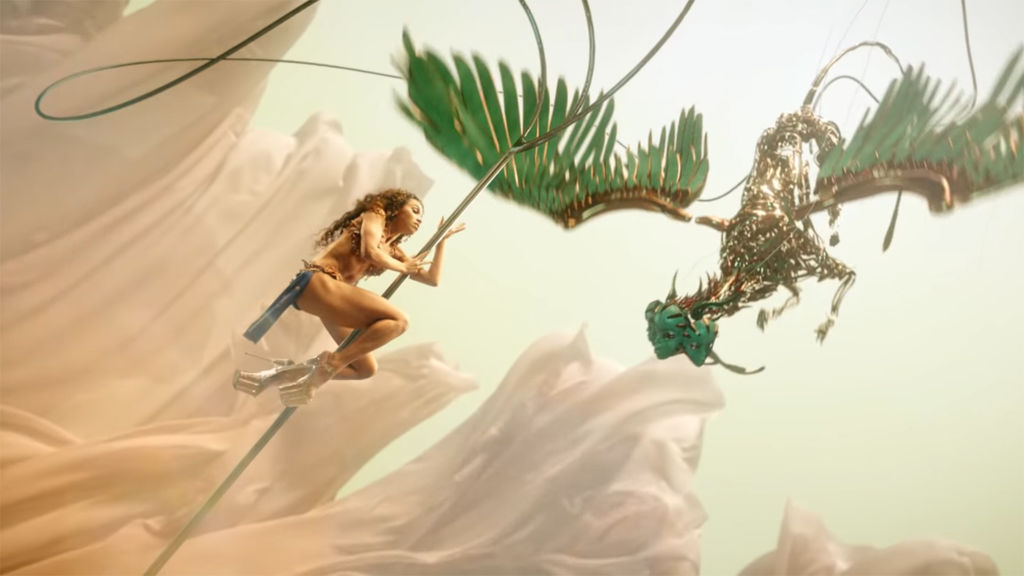
Credits
powered by
- Production Company Object & Animal
- Director Andrew Thomas Huang
- Executive Producer Morgan Clement
- Executive Producer Dom Thomas
- DP Daniel Fernandez Abello
- Production Designer Fiona Crombie
- VFX Analog
- Sound Design Ben Tomastik
- Colorist Aubrey Woodiwiss
- Producer Alex Chamberlain
- Editor Andrew Thomas Huang
How did you develop the visual language for Cellophane?
I researched pole and observed other films and music videos that incorporated pole dancing and noticed that for an athletic practice that involves spinning, there were no videos that utilized the spiraling language of pole and incorporated into the language of the camera-work. I felt that it was important to make a video that would spin in a full circle as she spun the opposite direction so that the camerawork and her choreography are speaking the same language. The resulted in the need for a 360-degree set design, which was an extreme production challenge.
I think fantasy, folklore, and mythology are all native templates to that personal language of the body and soul.
I also took to drawing and illustrating, which is my first artistic language. I drew sketches of the universe into three acts: a terrestrial plane where she performs for an unseen audience, a heavenly plane she strives toward, and an underworld that she plummets down into. After listening to twigs and chatting about her life and career, I knew that this story was about someone striving for perfection and never feeling like it was enough.
So, I created a three-act Icarus story in which a woman dances to attain perfection, ascends within reach but falls from grace, and then is forced to confront herself and put herself back together. Once I had the story, the rest followed.
Above: Treatment art drawn by and provided courtesy of Andrew Thomas Huang.
How did you approach the VFX planning for Cellophane?
I storyboard the whole video carefully before we start. I rely on previsualization both with 2D sketches and 3D animatics created in Maya to block out the staging and the world so that we have a complete picture of what is required for effects on set and after in post-production.
I created a three-act Icarus story in which a woman dances to attain perfection, ascends within reach but falls from grace.
I also do a lot of my own concept art which I use both in the pre-production phase and also use after to visualize for FX artists what we are trying to achieve. The visuals were created by Analog Studio in London whom I’ve had the pleasure of working with in the past. They are such a talented team and it was great to work with them again, since I knew that the final product would end up stellar.
Can you talk about the shooting process with such a VFX-heavy piece?
Because I do nearly all of the previsualization ahead of time, it’s easier for us as a crew to envision the final product when we’re on set together. We printed out my storyboards and hung them on whiteboards for the crew so we could all point to each shot and know exactly what we were filming.
I knew that this story was about someone striving for perfection and never feeling like it was enough.
I always feel bad making artists perform on bluescreens – it really is a hellish environment for performers as it strips them of context. But twigs is a pro and we created stand-ins and props to help block out everything that would be there digitally in the end.
Above: Storyboard and actual film side-by-side comparisons
FKA twigs’ performance is very physical - what was the most challenging part about capturing this? How did you interpret her physical power over, or in congress with, her sexuality?
The hard part about working with incredible dancers is that you really need to capture them at their best, which is at the beginning of the day. Twigs had been training for this routine for 6 months so we had to be on our toes not to fuck up and capture her routine. Any normal person can only perform this dance a few times before their completely exhausted. The physical stamina it requires to do what she does is insane, and we had to be on our best to capture it once and move on rather than make her repeat it over and over.
It was twigs’ idea to hang upside down and grab the camera, which was genius because it dirtied up an otherwise clean video.
Regarding her sexuality, I mean, yes, twigs looks absolutely stunning. However, that is just a byproduct of the fact that she’s a deadly serious athlete and performer who has trained herself in what is essentially a martial art. We all treated this like she’s entering a dojo – she just happens to look killer while she’s at it.
Do you have a favorite part of the movie?
I think the falling sequence. That’s when the video just breathes. It’s the moment when all of our precision and planning gave way to something spontaneous, elegant, and dreamlike. It blossomed before us and made us all realize what we were making was magic together.
Above: Stills from Cellophane.
Who else contributed their strong artistic vision to Cellophane?
I think twigs’ stylists Matthew Josephs and Ed Marler are so talented. They have such an intuitive sense of color and our early conversations about her outfit informed the world very much with the copper and jade palette.
The physical stamina it requires to do what she does is insane. We had to be on our best to capture it once and move on rather than ask her to repeat it.
I also need to shout Dani Abello who did beautiful cinematography for this and production designer Fiona Crombie, known for her work on The Favourite with Yorgos Lanthimos. She’s such a pro and built sets to an epic scale that made our world feel tangible and complete. Choreographer Kelly Yvonne nailed the pole routine and was such a delight to work with. Overall, we had such an excellent team.
Can you point to a specific set of inspirations or genres you referenced in this film?
I’m a big fantasy nerd so I always have to point to 80s films like The Dark Crystal, Labyrinth, and Return to Oz. I love coming-of-age stories about a protagonist who discovers chambers and corridors within their inner psyches that they didn’t know they could open. It’s a very Lewis Carroll-inspired, dreamy idea. I felt like this is twigs’ personal inner soul journey and this video should feel like a fairytale as such.
Above: VFX concepts and previsualization renders from Analog Studios; Below; Behind the Scenes compilation from Analog Studios.
Mythology appears in a lot of your work - descending and ascending through realms, religious iconography...What sort of myth are you telling with Cellophane?
Thanks! I’m glad you picked up on that. I was also very much into Carl Jung and alchemy some years ago and so I utilized some of the same framework and based the Cellophane narrative on the myth of Icarus or the story of The Red Shoes by Hans Christian Andersen. Cellophane is just a story of a dancer who can’t stop: she dances too close to the sun and pays the price.
I love coming-of-age stories about a protagonist who discovers chambers and corridors within their inner psyches that they didn’t know they could open.
I’ve also always been interested in the idea of deity logic: the notion that our sense of morality is limited to our human experience, whereas gods have their own incomprehensible scale that measures someone’s sins and virtues. I wanted to portray that with the Sphinx in Cellophane, portraying twigs’ ideal form of perfection as a flying god with many faces. Twigs’ character thinks she wants perfection, but the Sphinx unveils itself to reveal a hidden mirror truth back to her that sends her for a spin.
I think too often in Hollywood, visual effects are used to portray war and violence; things that lack imagination. I’m more interested in telling personal inner stories and I think fantasy, folklore, and mythology are all native templates to that personal language of the body and soul. I can’t help but commit myself to way of thinking.
Credits
powered by
-
- Production Company Object & Animal
- Director Andrew Thomas Huang
-
-
Unlock full credits and more with a Source + shots membership.
Credits
powered by
- Production Company Object & Animal
- Director Andrew Thomas Huang
- Executive Producer Morgan Clement
- Executive Producer Dom Thomas
- Production Services Radioaktive Film
- DP Daniel Fernandez Abello
- VFX Analog
- 2D Artist Fabio Zaveti
- VFX Producer Rose Nicholson
- Producer Alexander Chamberlain
- Producer Irina Nepomenko
- Choreographer Kelly Yvonne
- Production Designer Fiona Crombie
- VFX Executive Producer Matt Shannon
- Editor Andrew Thomas Huang

Credits
powered by
- Production Company Object & Animal
- Director Andrew Thomas Huang
- Executive Producer Morgan Clement
- Executive Producer Dom Thomas
- Production Services Radioaktive Film
- DP Daniel Fernandez Abello
- VFX Analog
- 2D Artist Fabio Zaveti
- VFX Producer Rose Nicholson
- Producer Alexander Chamberlain
- Producer Irina Nepomenko
- Choreographer Kelly Yvonne
- Production Designer Fiona Crombie
- VFX Executive Producer Matt Shannon
- Editor Andrew Thomas Huang
)
